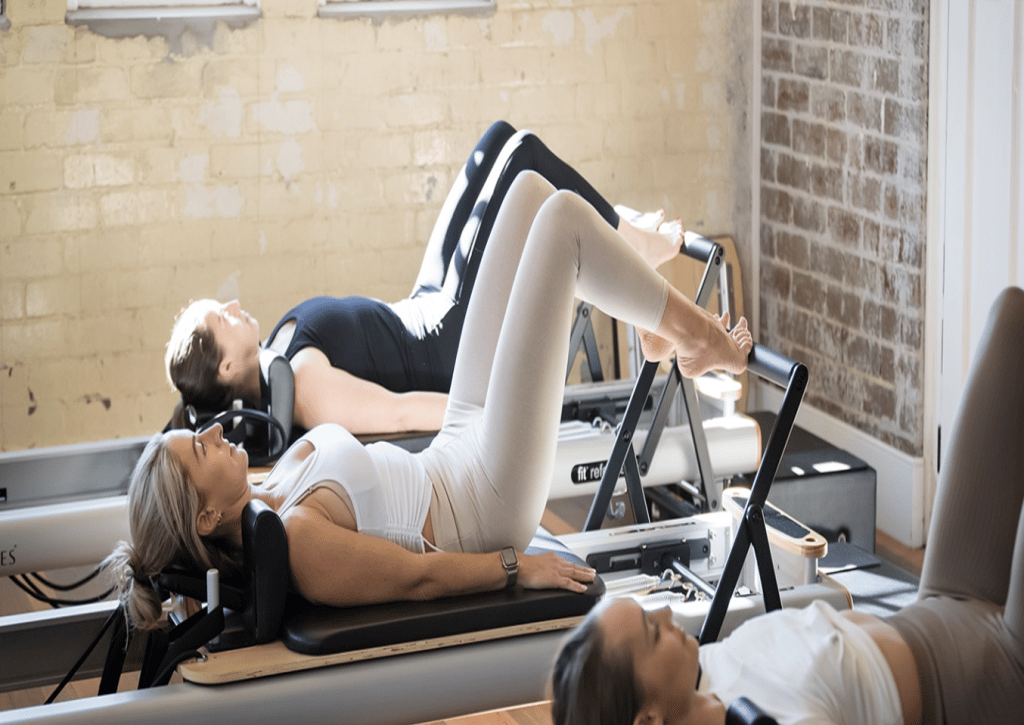Pilates isn’t as sedate as it looks! It’s a form of exercise that improves your posture while strengthening your muscles at the same time. While you may be familiar with the image of a lithe body draped over a large ball, Pilates actually uses a range of equipment and movements. It’s excellent for building your core strength, flexibility and improving joint health.
How about trying out Reformer Pilates classes at your local gym for resistance training? Or, choosing this low-impact workout over yoga? Pilates has been around for over 100 years so it’s not a new fad either! What other interesting facts do you need to know about this gentle but effective exercise? Read on and find out!
4 Things You Need to Know About Pilates Before Signing Up for a Class
1. Pilates Was Originally Used for Rehabilitation Purposes
Pilates was first used for rehabilitating soldiers and dancers recovering from injuries. Pilates is a low-impact fitness workout used to improve muscle tone, build core strength and give the body more flexibility. It’s good for your joints and for giving you more balance.
Dr. Joseph Pilates, a physical trainer, devised this exercise routine in the 1920s, incorporating various boxing and gymnastic moves. Toe taps, stomach curls and leg extensions are some of the typical movements used in Pilates to encourage core activation. By activating the core, the spine is protected and body movement is improved.
2. Anyone Can do Pilates
Pilates isn’t only limited to injured soldiers and dancers! Anyone can do this form of exercise, no matter your fitness level, gender or age. Not only is it a practice that is sustainable for the body, but if done consistently can benefit you even in your old age.
There are less chance of suffering injuries when doing Pilates compared to high-intensity fitness routines. Doing two to three classes a week will improve your overall wellbeing and you can pick from a variety of routines to focus on particular parts of your body. Ramping up to four classes per week will optimise the benefits.
3. Different Types of Pilates Methods
There are different types of Pilates methods you need to know about before booking a class at your local gym! Here are five of the most common forms:
- Reformer Pilates: This form entails using a machine for adding further resistance to your workout. Also known as a Pilates Reformer, the machine gives more variety to your exercise routine. It’s best for shoulders, spine and legs and should be done under the supervision of a trainer.
- Mat Pilates: This strengthening and lengthening form of exercise is best for building strong core muscles. It’s also good for arms and legs. Your body weight is used to give resistance and helps you to focus and control your muscles during a workout.
- Clinical Pilates: Used mostly by trained physiotherapists, this form helps treat various injuries and health problems. It can improve recovery after surgery and reduce chronic pain.
- Contemporary Pilates: Combined with other types of exercise routines such as yoga or aerobics, this method is also known as hybrid Pilates. It’s often modified to suit a person’s body type, physical state and lifestyle. Various gym equipment such as dumbbells and stretching bands may be used in these classes.
- Classical Pilates: Based on the original set of exercises designed by Dr. Joseph Pilates, this type allows for seamless transitioning from one movement to the next. It follows a set sequence, going from basic to more complicated exercises.
When deciding between taking Mat Pilates classes or opting for the more classical routine, bear in mind each workout focuses on different parts of the body.
4. Pilates Can Have Many Health Benefits
Pilates is good for the mind, body and soul. Proven health benefits include the following:
- Improved balance and coordination
- Better posture
- Increased body flexibility
- Improved focus and concentration
- More zest for life with increased energy levels
- Better stress management
- Pilates helps with back injuries and associated pain.
- It’s good for building bone health, an essential factor for women facing osteoporosis.
Overall, Pilates can improve your fitness level. Through controlled breathing exercises, Pilates is also beneficial for activating your core and connecting deeply with your body.
Final Thoughts
Knowing what Pilates is all about will help you make a well-informed choice in which exercise class to sign up for! A low-impact exercise, Pilates is suitable for everyone so bring your kid or let granny join in for a workout. The health benefits are numerous and before you know it, you’ll be jumping out of bed every morning, more energised than before.
It doesn’t get boring either with so many different movements involved. Get started today and sign up for a Pilates class so you can experience a total wellbeing transformation.
